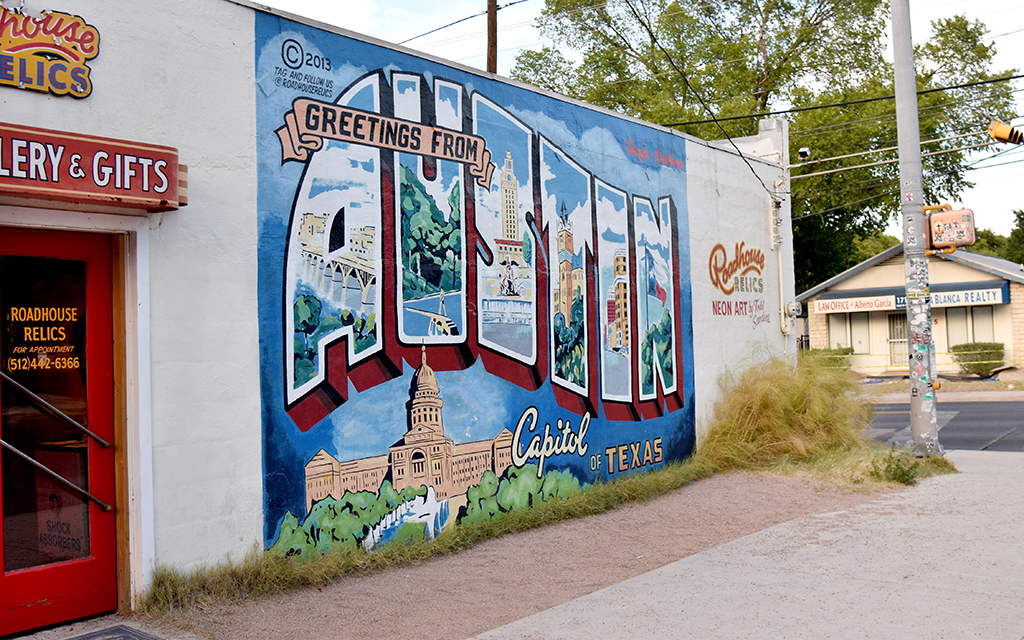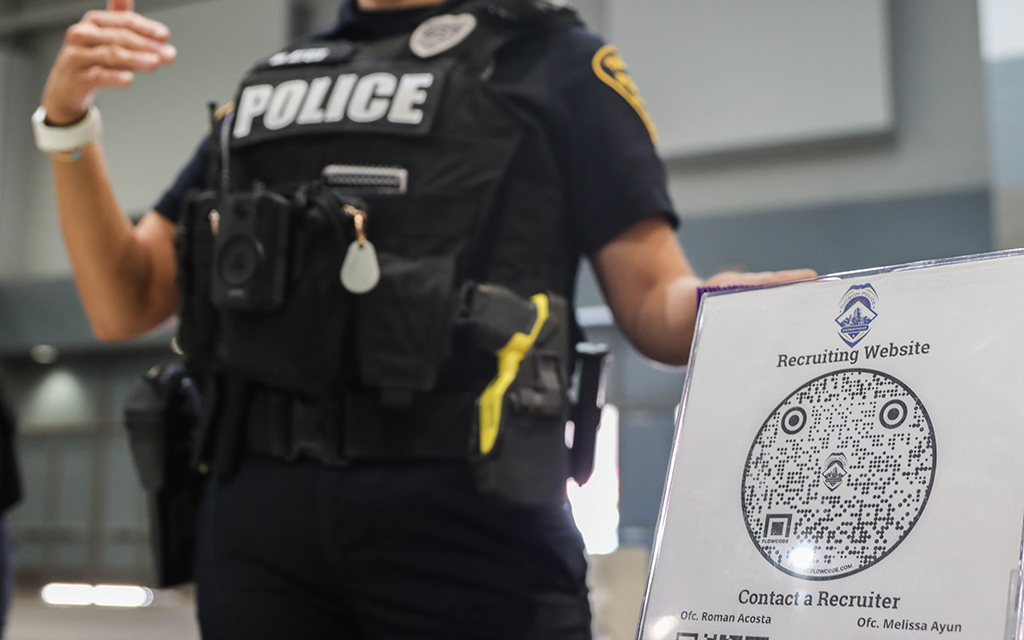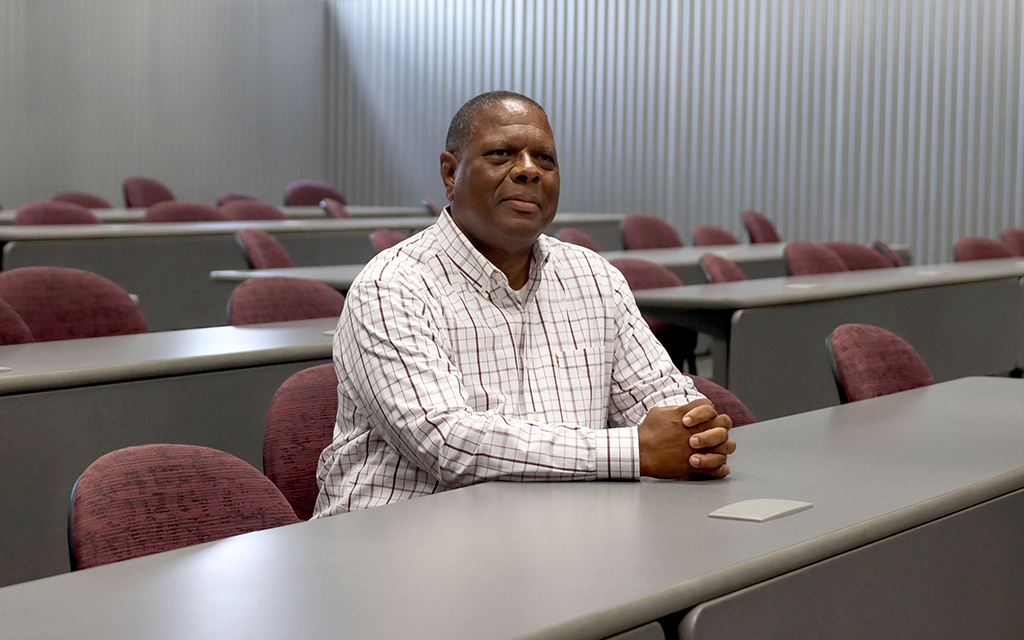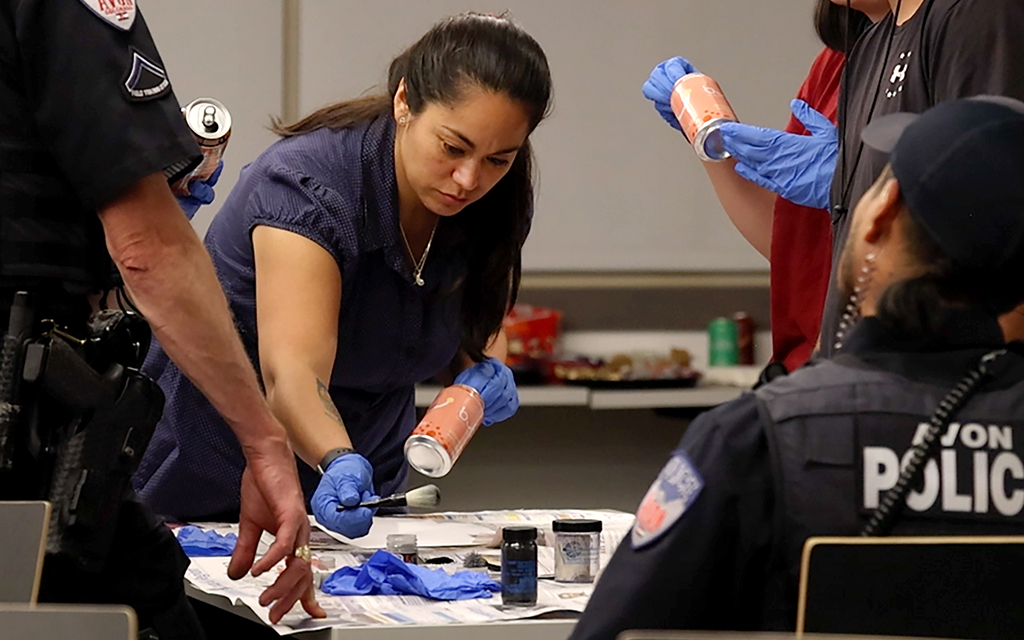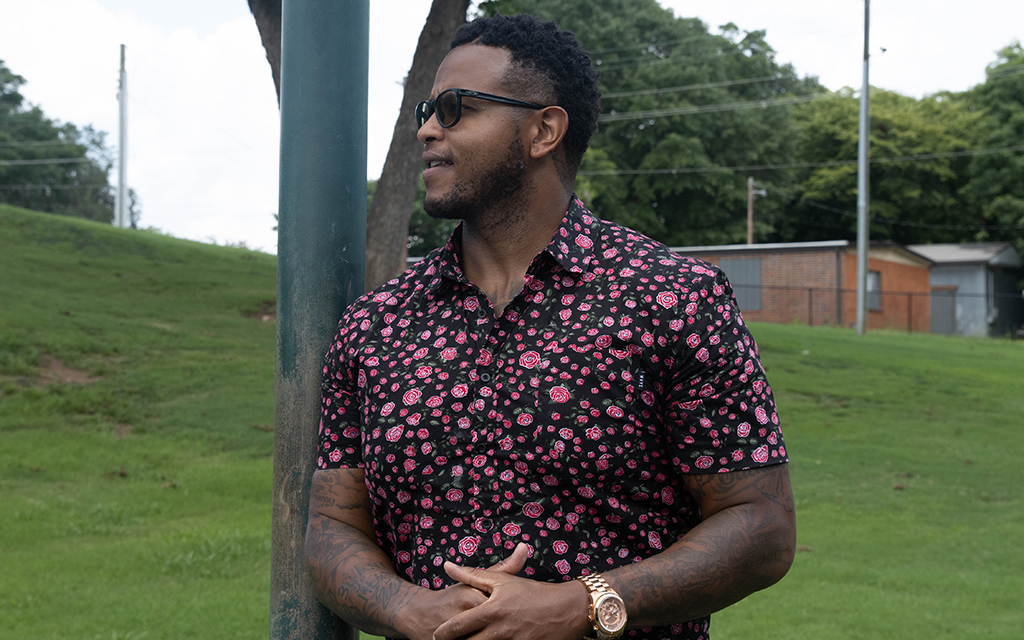“The police department sometimes back then was an extension of high school in many ways,” Ritter said. “You’ve got mostly males there that say things that they think are funny without really thinking about it, that can be offensive.”
Ritter said Police Chief Norm Stamper, who led the department from 1994 to 2000, contributed to his positive experience coming out.
The relationship between law enforcement and lesbian, gay, bisexual, transgender and queer or questioning individuals has been historically fraught. Instances of hate crimes, prejudice and discrimination have eroded trust between police and the LGBTQ+ community.
Many departments want to rebuild that relationship, both outside and inside the department.
But evidence of progress is more difficult to track. There is no national standard to track how many officers identify as LGBTQ+ or a database of internal inclusion policies.
However, major departments across the country are creating targeted efforts to recruit LGBTQ+ people. The New York Police Department hosts recruitment drives, attends Pride events and features gay-identifying officers in advertisements. The San Francisco and Atlanta police departments show support for an inclusive culture through openly gay leadership.
The first step, experts say, is to show LGBTQ+ recruits they’re welcome at police departments and get them through the door.
“The fear of even applying, automatically thinking that they would never be considered, keeps a lot of people from doing that, especially if they don’t have any role models to look at,” Ritter said.
Cherry, the Charleston recruiter, has been policing for more than a decade. She doesn’t want to be “the token.”
“It’s not our responsibility to make up for sins of the past,” she said. “I’m not being brought into a police department to be the poster child and say, ‘Well, look, we’re doing it’ because now we have a gay woman.”
Cherry has taken the initiative to increase LGBTQ+ awareness. She established gender identity and orientation training for recruits, trained officers on hate crimes and launched the first Safe Place Program in South Carolina, which identifies local businesses where LGBTQ crime victims can stay and call police, according to a profile of Cherry.
The best recruitment comes from officers in departments, she said, and then departments need to make sure LGBTQ+ officers continue to feel valued.
“It isn’t about putting a flier out with a flag,” Cherry said. “It’s not about showing two gay people in police uniforms high-fiving each other. That’s not what it’s about.”
Cherry gave credit to Ritter for what he accomplished and “catapulting forward.”
Ritter became Seattle Police Department’s first LGBTQ+ liaison in 2014, and for years, he was the only full-time liaison in the country. This wasn’t only a way for the department to improve communication with the LGBTQ+ community, Ritter considered it a leadership opportunity for himself.
Ritter also designed the initiative Safe Place in May 2015. Since retirement, he continues to offer Safe Place training through his consulting and training company J.S. Ritter & Associates.
Nonprofits – such as Out to Protect in California and the Gay Officers Action League in New York – also offer LGBTQ+ officers and departments support. They award funds to support enrollment in the police academy, provide training programs to build liaison positions and lead recruiting efforts in the gay community.
Advocates said they will continue to address challenges in recruiting LGBTQ+ officers.
Departments can no longer legally ask officers whether they’re gay. However, Ritter objects to some of the mental health and substance abuse questions often asked during screening. Research suggests LGBTQIA+ people are predisposed to self-harming habits to cope with pressures of social nonconformity.
Trust between police and the community continues to be questioned.
The first Pride march was held June 28, 1970, in New York City to commemorate the third anniversary of the Stonewall Riots, ignited when police raided a gay club and detained patrons.
Half a century later, on May 15, 2021, Pride organizers in New York banned law enforcement from attending until 2025 to “create safer spaces” for attendees, according to the Associated Press. Officers nationally spoke out against this decision. Since then, this prohibition has caught on in several other major cities across the country.
Ritter said he doesn’t believe the decision represents community sentiment as a whole. He has worn his uniform at Pride for years, and he said can only recount a few instances where participants were unwelcoming.
“The problem with a lot of the activists that I’ve worked with, even in the LGBT community, is that they don’t want to take the time to learn about us,” Ritter said. “They want us to learn about them. It has to be a healthy relationship. Both sides have to want to make it work together.”
Recruiting and people of color
Cherry said she hears it all the time. Potential candidates come to her and say their family doesn’t want them to be a cop – especially in minority communities.
“You have families telling African American men and women not to do policing,” she said. “So how are you expecting to change policing if everyone keeps telling everyone not to do policing?”
It’s frustrating to recruit when you have parts of society telling people not to join the force, Cherry said.
“It’s not just the responsibility of police departments to diversify police departments,” she said. “It’s also the responsibility of the community at some point to say, ‘Hey, if we want to see change, we have to also kind of encourage and usher people into those roles.’”
But real change may take time.
In a 2020 survey, nearly half of the Black Americans who responded said they had very little or no confidence that police officers treat people of different skin colors equally, according to a PBS NewsHour-NPR-Marist poll of about 1,000 U.S. adults.
Experts have long stressed that one way to build trust is for police departments to better reflect the communities they serve.
Brandon Kooi, professor and director of the criminal justice program at Aurora University in Illinois, said many departments want more minorities on their forces.
“When you’re having a recruitment crisis, it’s going to be from all walks of life, including minorities,” Kooi said. “Even before the crisis, there were many departments that were saying that.”
Despite an effort by many police forces to hire more people of color, a New York Times analysis of federal data showed that from 2007 to 2016, larger police departments had become whiter relative to the communities they serve.
Still, some departments have made efforts.
In Minnesota, several police departments launched a program called Pathways to Policing that removes some of the barriers to becoming a police officer, including paying candidates to attend a condensed training program. About a year after the program launched, the police chief in Bloomington told a local television station 67% of the department’s new recruits were racially diverse.
The program was so successful, U.S. Rep. Dean Phillips, D-Minn., wants to implement it on a national scale. He co-introduced the Pathways to Policing Act, which would provide $50 million for states to create programs similar to Minnesota’s. It also would provide $50 million to the Department of Justice for a national recruitment campaign.
Dropped college credit requirements is another tact.
Kooi said departments that started requiring college education for recruits also hurt diversity efforts.
“This became problematic, especially for minority candidates,” he said. “You know, minorities are less likely to have a college degree than the white majority.”
And for those who earned their degrees, they might look elsewhere for a career where that degree is respected and recognized.
“They’re going to want to go to places where they’re going to get paid well,” Kooi said, suggesting that departments offer signing bonuses to recruits with degrees.
“We need to reconsider how we think about rewarding candidates based on the preparation that they’ve brought to the field of policing.”
Colleges and universities also have played a role in exposing their diverse students to law enforcement jobs through internships and associations.
Lincoln University, a historically Black college in Jefferson City, Missouri, created a police academy that graduated six recruits in its first class. Chief Gary Hill, the co-founder and principal instructor of the program, told ABC’s Nightline he hopes the academy’s success will inspire other HBCUs.
In Arizona, Ayun said Police Chief Chad Kasmar, a Tucson native, is invested in creating a partnership with the community.
Hiring more local officers can reduce fear and increase communication, particularly with the Spanish-speaking population, Tucson police spokesperson Francisco Magos said. About 27% of the population in Tucson speaks Spanish, and about 46% self identify as Hispanic, according to Census data.
Lluvia Niño, who attended the recent Tucson community event that included police recruiters, said watching the police make the effort to get closer to families at events helps those who feel distanced from law enforcement.
“We need to be united,” she said in Spanish. “The kids love to see this. They’re glad. It’s good while they’re growing up that they see this.”

